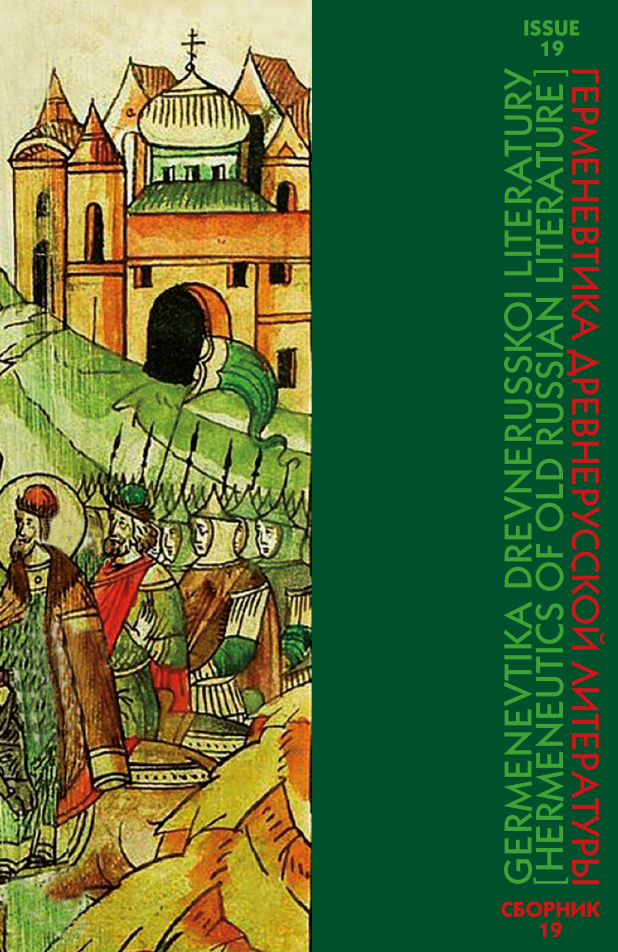Abstract:
The article examines the imagological symbols in the Praise by Epiphanius the Wise. The perception of St. Sergius of Radonezh figure today fits the idea of him that developed at the beginning of the 20th century, despite seventy years of atheistic propaganda or thanks to it. St. Sergius of Radonezh was then a symbol of Holy Russia, a “folk idea,” according to the great Russian historian V.O. Klyuchevsky. That’s how they look at him now. However, the appearance of a symbol, its crystallization in the people’s consciousness requires a certain time and, most importantly, certain texts. The first work in the cycle of texts about St. Sergius of Radonezh is Praise to him, written by his disciple and follower, St. Epiphanius the Wise. Today, Praise to St. Sergius is forgotten. It is practically not studied. The article reveals the dynamic image of St. Sergius of Radonezh, which was written by Epiphanius in Praise. At the same time, Praise is considered as such a work that could exclude the main character from the historical narrative, create a myth about him. And this, in turn, led to the formation of a symbol on its basis, as well as the tradition of its perception, stretching over different eras and, most importantly, connecting them.
REFERENCES
1 Averintsev, S.S. “Istoricheskaia podvizhnost’ kategorii zhanra: opyt periodizatsii” [“Historical Mobility of the Category of Genre: an Experience of Periodization”]. Istoricheskaia poetika: Itogi i perspektivy izucheniia [Historical Poetics: Results and Prospects of Study]. Moscow, Nauka Publ., 1986, pp. 104–116. (In Russian)
2 Kloss, B.M. Izbrannye trudy [Selected Writings], vol. I. Moscow, Iazyki russkoi kul’tury Publ., 1998. 568 p. (In Russian)
3 Kliuchevskii, V.O. Pravoslavie v Rossii [Orthodoxy in Russia]. Moscow, Mysl’ Publ., 2000. 621 p. (In Russian)
4 Leonid (Kavelin), arkhim. “Predislovie k izdaniiu 1885 g.” [“Preface to the 1885 Edition”]. Zhitie Prepodobnogo i Bogonosnogo ottsa nashego Sergiia Chudotvortsa i Pokhval’noe emu slovo, napisannye uchenikom ego Epifaniem Premudrym v XV veke [Life of the Monk and God-bearing Father of Our Sergius the Wonderworker and the Word of Praise to Him, Written by His Disciple Epiphanius the Wise in the 15th Century]. Sergiev Posad, Sviato-Troitskaia Sergieva Lavra Publ., 2005, pp. 257–268. (In Russian)
5 Losev, Α.F. Dialektika mifa [Dialectic of myth]. Moscow, Mysl’ Publ., 2001, 558 p. (In Russian)
6 Lotman, Iu.M. Izbrannye stat’i v trekh tomakh [Selected Articles in Three Volumes], vol. 1. Tallinn, Aleksandra Publ., 1992. 479 p. (In Russian)
7 Pervushin, M.V. “Dva vzgliada na kniaginiu Ol’gu v drevnerusskoi gimnografii” [“Two Views on Princess Olga in Old Russian Hymnography”]. Litera, no. 10. 2020. Available at: https://nbpublish.com/library_read_article.php?id=33861 (Accessed 14 May 2022). (In Russian)
8 Pervushin, M.V. “Neskol’ko vzgliadov na odnu zhizn’: literaturnye obrazy kniazia Vsevoloda Pskovskogo” [“Several Views on One Life: the Literary Image of Prince Vsevolod of Pskov”]. Germenevtika drevnerusskoi literatury [Hermeneutics of Old Russian Literature]. Issue 19. Ed.-in-chief O.A. Tufanova. Moscow, IWL RAS Publ., 2020, pp. 507–525. (In Russian)
9 Greenblatt, Stephen. Renaissance Self Fashioning: From More to Shakespeare. Chicago, University of Chicago Press, 1980. 321 p. (In English)
10 Kanouse, David E., Gumpert, Peter, and Donnah Canavan-Gumpert. “The Semantics of Praise.” New Directions in Attribution Research, Harvey, J.H., Ickes, W., Kidd, R.F. (eds.), vol. 3. New York, Lawrence Erlbaum Associates, 1981, pp. 97–115. (In English)






